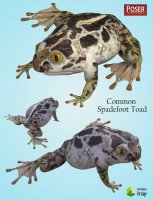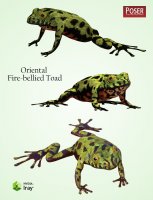-
Welcome to the Community Forums at HiveWire 3D! Please note that the user name you choose for our forum will be displayed to the public. Our store was closed as January 4, 2021. You can find HiveWire 3D and Lisa's Botanicals products, as well as many of our Contributing Artists, at Renderosity. This thread lists where many are now selling their products. Renderosity is generously putting products which were purchased at HiveWire 3D and are now sold at their store into customer accounts by gifting them. This is not an overnight process so please be patient, if you have already emailed them about this. If you have NOT emailed them, please see the 2nd post in this thread for instructions on what you need to do
You are using an out of date browser. It may not display this or other websites correctly.
You should upgrade or use an alternative browser.
You should upgrade or use an alternative browser.
Nature's Wonders Sneak Peek Thread
- Thread starter Ken Gilliland
- Start date
I've got all 6 of my toads done now, but need to deal with some weird quirks on one of my new morphs and cleaning up the textures before I start creating the DS and SF versions. I'm guessing Toads will be ready around the end/start of the month.
Here's a Firefly render using the Western Spadefoot as well as Dawn and Mec's witch set

Here's a Firefly render using the Western Spadefoot as well as Dawn and Mec's witch set
A couple things, first of all, the Winged Horse is out. There are some great renders of it on CWRW's thread.
Here's a couple more Toad images... I expect this set to be out in early August.


Here's a couple more Toad images... I expect this set to be out in early August.


VortigensBane
Busy Bee
Now I've just got to finish the Frog Prince render so I can do one with Thumbellina and the Wicked Toad Queen...
Another render as Toads moves toward beta...

For those of you that have a few of my Nature's Wonders sets, this render is a great example of how I combine them. The ground is the "Kiwi Burrow" with the "Big Cypress" periphyton material. I used also "Big Cypress" individual plants "Swamp Fern" and "Saw Grass" with the "Sagebrush Habitat" Rock2.
For those of you that have a few of my Nature's Wonders sets, this render is a great example of how I combine them. The ground is the "Kiwi Burrow" with the "Big Cypress" periphyton material. I used also "Big Cypress" individual plants "Swamp Fern" and "Saw Grass" with the "Sagebrush Habitat" Rock2.
Actually Rich, I think they're happy toadies.Happy froggies!
VortigensBane
Busy Bee
TOADally awesome, in fact... 
Very cool, Ken! A bit off subject I thought of you when I saw a lot of fantastic examples of owls and songbirds in the white backed woodpecker and PBS nature special called the forest of the lynx-which wasn't as much about the lynx that's endangered in this particular unusually high forest, but the birds that were endangered to. It was a beautiful program and brought attention to the plight of the birds.
Last edited:
Not that far off-topic, apart from my love of frogs, the "other" reason for my doing this frog series is...
"No group of animals has a higher rate of endangerment than amphibians. Scientists estimate that a third or more of all the roughly 6,300 known species of amphibians are at risk of extinction. The current amphibian extinction rate may range from 25,039 to 45,474 times the background extinction rate.
Frogs, toads, and salamanders are disappearing because of habitat loss, water and air pollution, climate change, ultraviolet light exposure, introduced exotic species, and disease. Because of their sensitivity to environmental changes, vanishing amphibians should be viewed as the canary in the global coal mine, signaling subtle yet radical ecosystem changes that could ultimately claim many other species, including humans." -Center for Biological Diversity
Here's a render of the Southern Toad, native to the Deep South (USA)...

"No group of animals has a higher rate of endangerment than amphibians. Scientists estimate that a third or more of all the roughly 6,300 known species of amphibians are at risk of extinction. The current amphibian extinction rate may range from 25,039 to 45,474 times the background extinction rate.
Frogs, toads, and salamanders are disappearing because of habitat loss, water and air pollution, climate change, ultraviolet light exposure, introduced exotic species, and disease. Because of their sensitivity to environmental changes, vanishing amphibians should be viewed as the canary in the global coal mine, signaling subtle yet radical ecosystem changes that could ultimately claim many other species, including humans." -Center for Biological Diversity
Here's a render of the Southern Toad, native to the Deep South (USA)...
...and the Common Toad found throughout most of Europe (excluding cold regions), Western Asia and North Africa....

Flint_Hawk
Dances with Bees
These look so realistic Ken! Amazing work as always!
Here's two more images, rendered in FF with some Field of Depth....
First, a pet shop favorite... the Oriental Fire-bellied Toad.
They are commonly kept as pets and it is also known as the 'tuti toad'. When disturbed or frightened a mildly toxic, milky-like secretion is emitted through the skin, mostly from the hind legs, and sometimes the belly. In addition to emitting this toxin, this toad will also lie on its back to show the color of its belly, indicating its toxicity to any predators.

...and the critically endangered Panamanian Gold Toad...
Despite one of its common name, the “Panamanian Golden Frog” is a true toad. It is considered to be one of the most beautiful toads in Panama and in 2010, the Panamanian government passed legislation recognizing it as a national symbol and August 14 as "National Golden Frog Day". This species shares much in common with the Poison Dart frog family. It carries a variety of toxins, including steroidal bufadienolides and guanidinium alkaloids of the tetrodotoxin class. These are water-soluble and they affect the nerve cells of anyone who comes in contact with them. The Panamanian Golden Toad uses this toxin to protect itself from most predators. A large dose can be fatal in 20 to 30 minutes.

First, a pet shop favorite... the Oriental Fire-bellied Toad.
They are commonly kept as pets and it is also known as the 'tuti toad'. When disturbed or frightened a mildly toxic, milky-like secretion is emitted through the skin, mostly from the hind legs, and sometimes the belly. In addition to emitting this toxin, this toad will also lie on its back to show the color of its belly, indicating its toxicity to any predators.
...and the critically endangered Panamanian Gold Toad...
Despite one of its common name, the “Panamanian Golden Frog” is a true toad. It is considered to be one of the most beautiful toads in Panama and in 2010, the Panamanian government passed legislation recognizing it as a national symbol and August 14 as "National Golden Frog Day". This species shares much in common with the Poison Dart frog family. It carries a variety of toxins, including steroidal bufadienolides and guanidinium alkaloids of the tetrodotoxin class. These are water-soluble and they affect the nerve cells of anyone who comes in contact with them. The Panamanian Golden Toad uses this toxin to protect itself from most predators. A large dose can be fatal in 20 to 30 minutes.
Flint_Hawk
Dances with Bees
These colorful toads are two of my favorites! 
